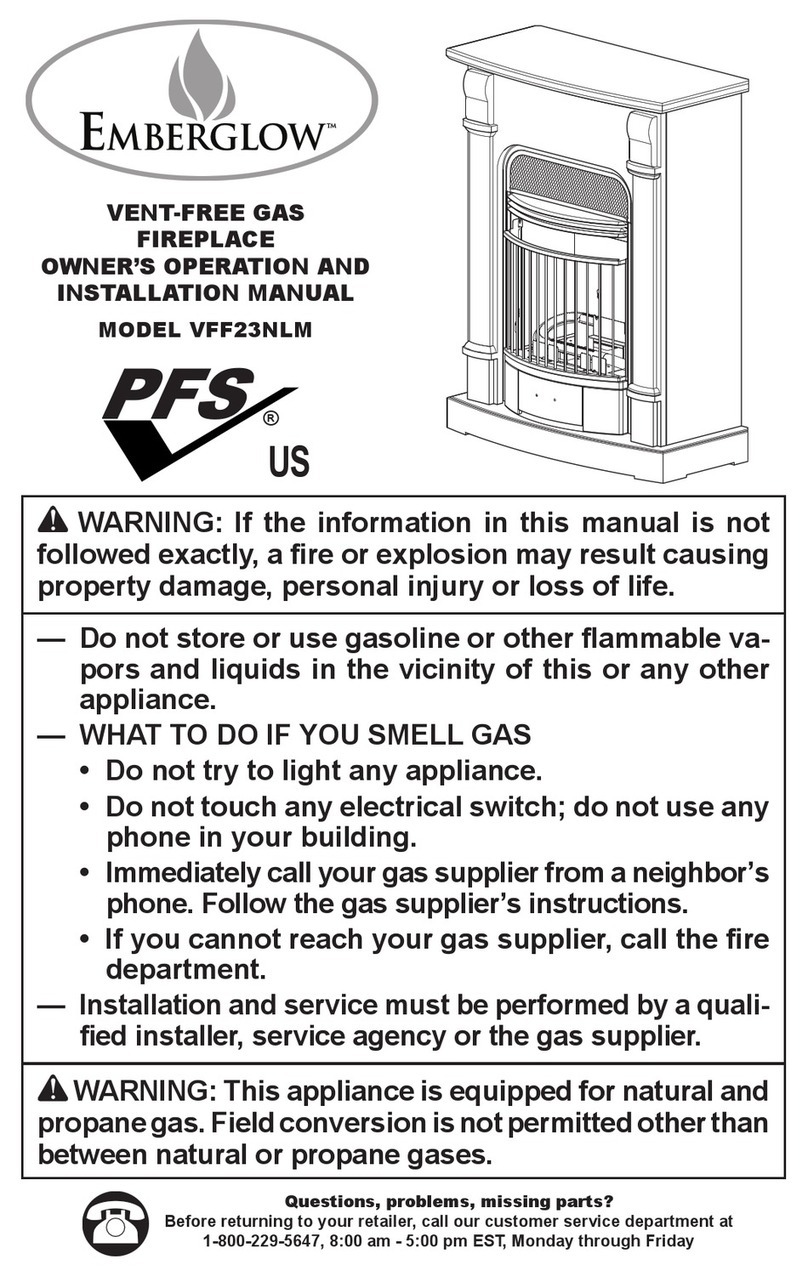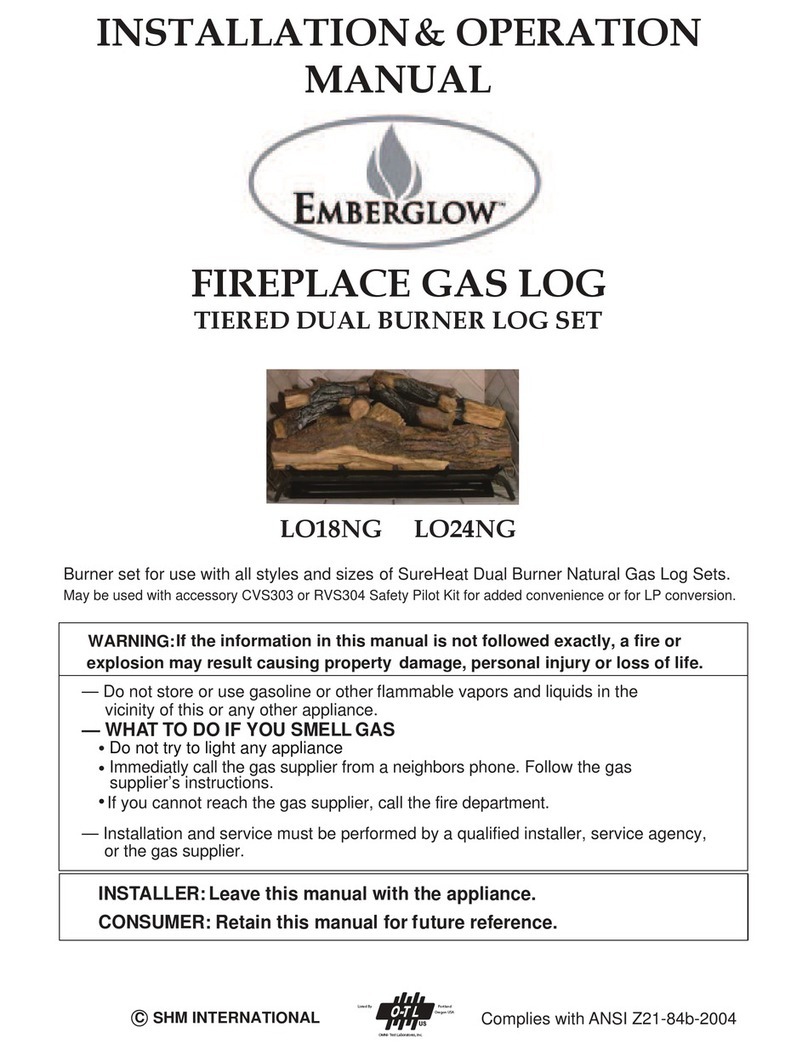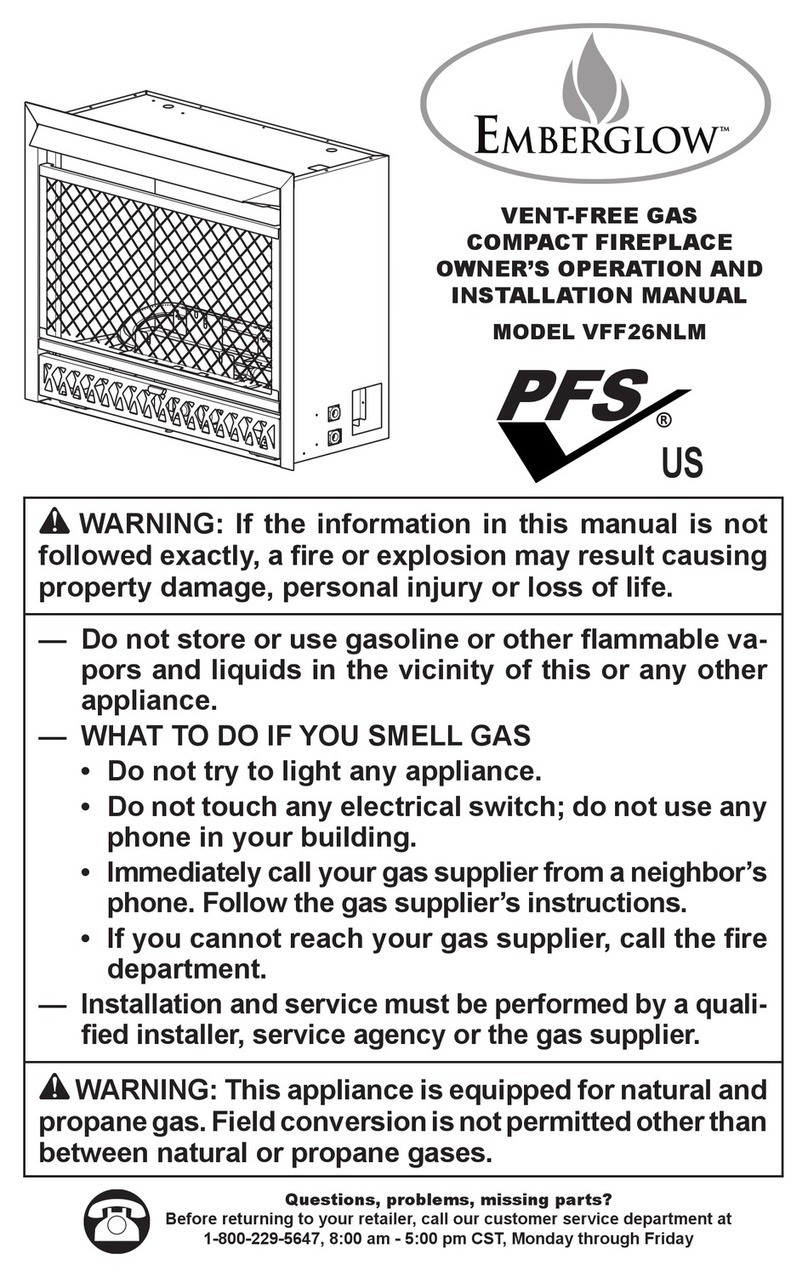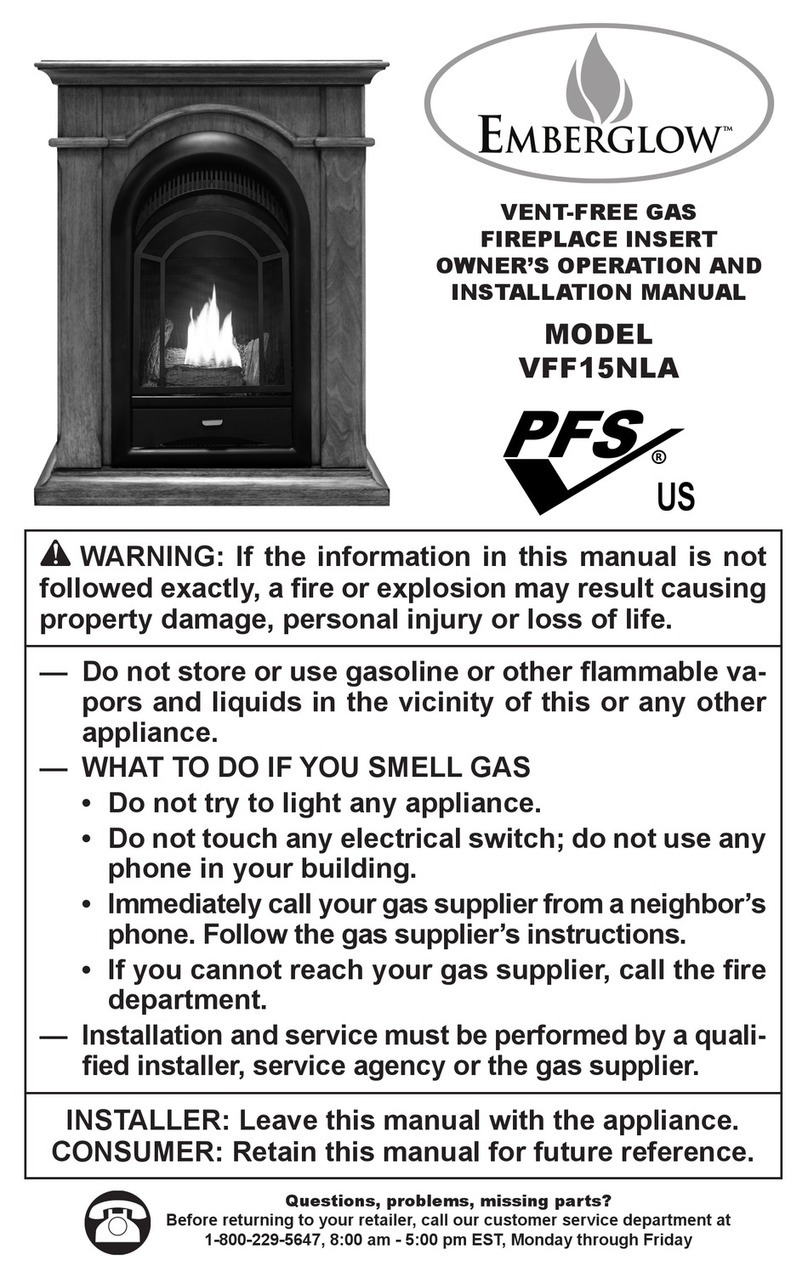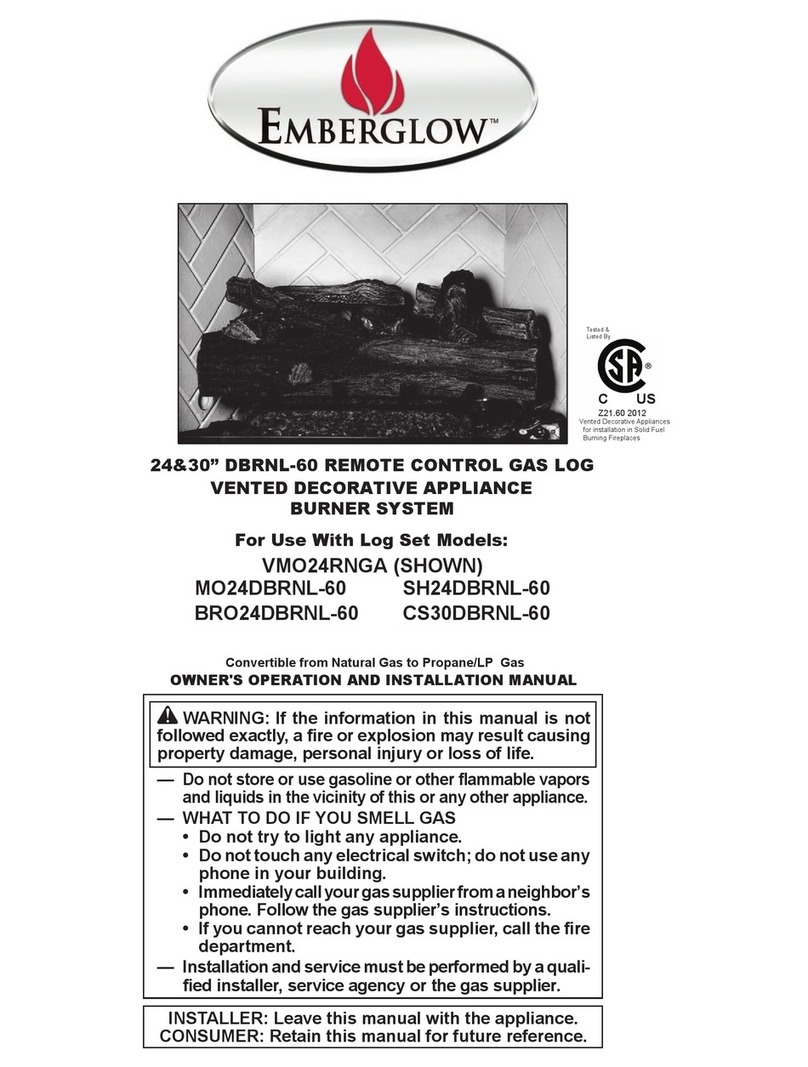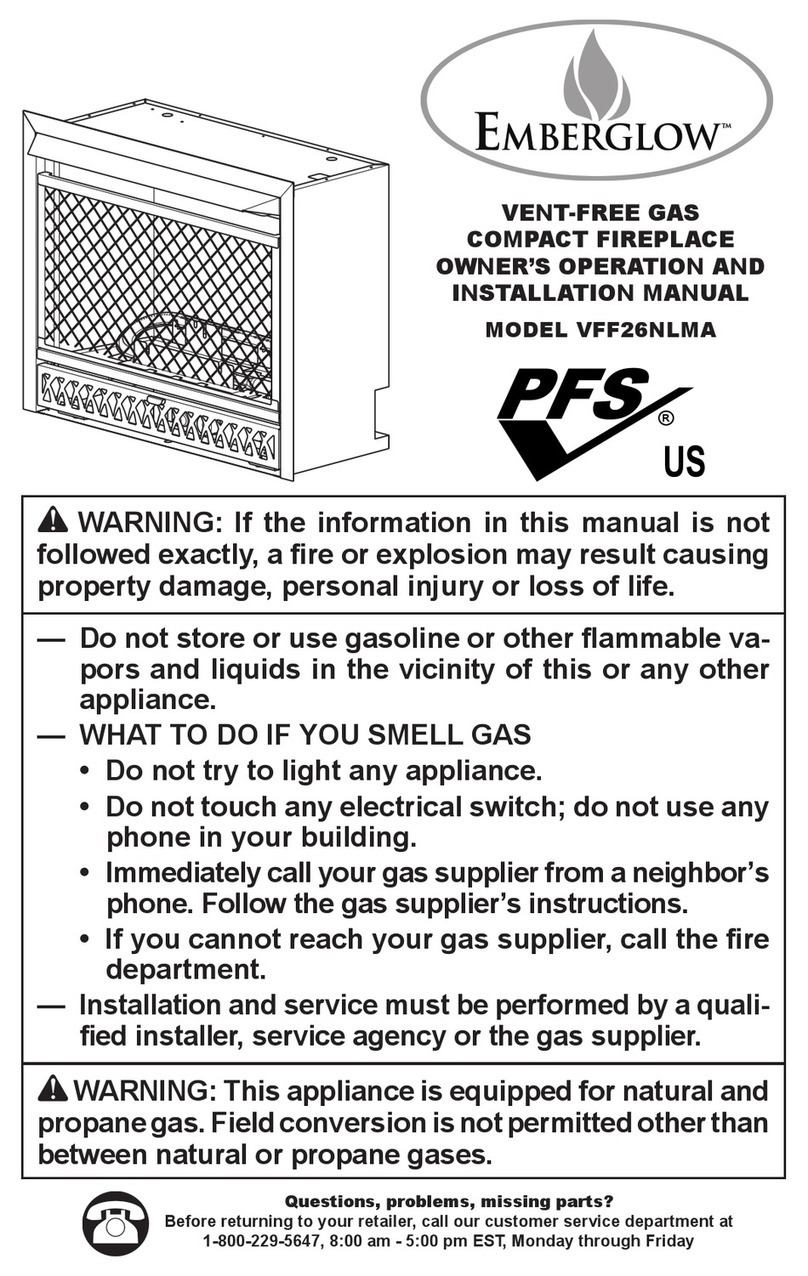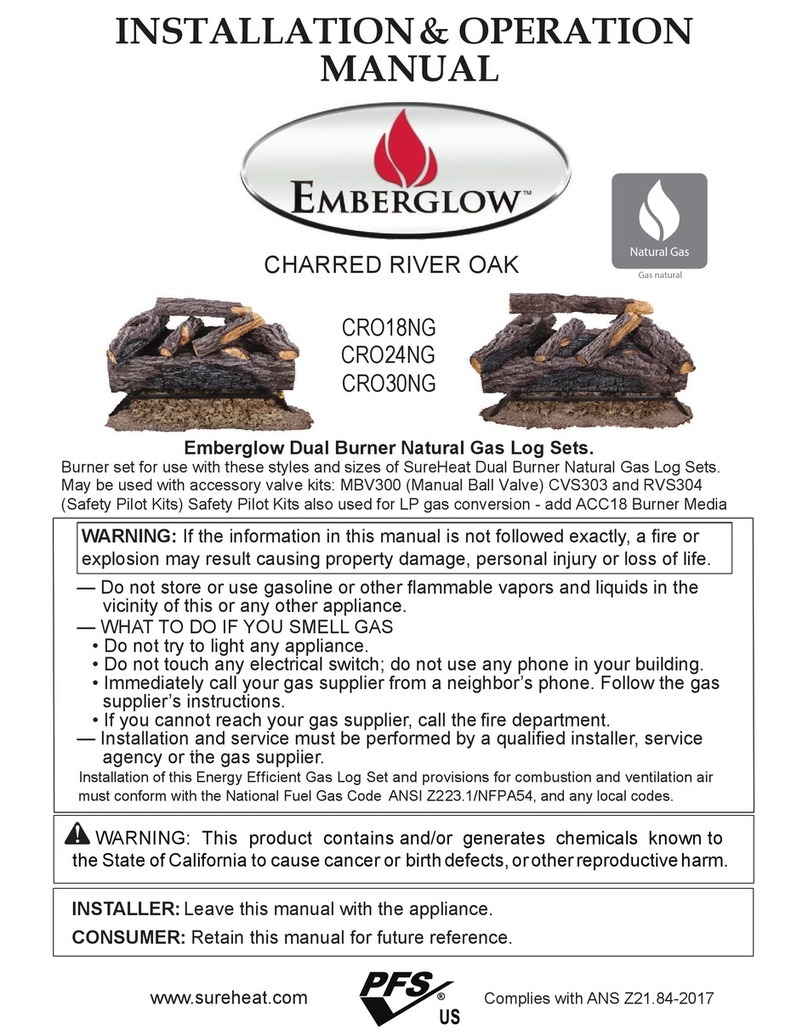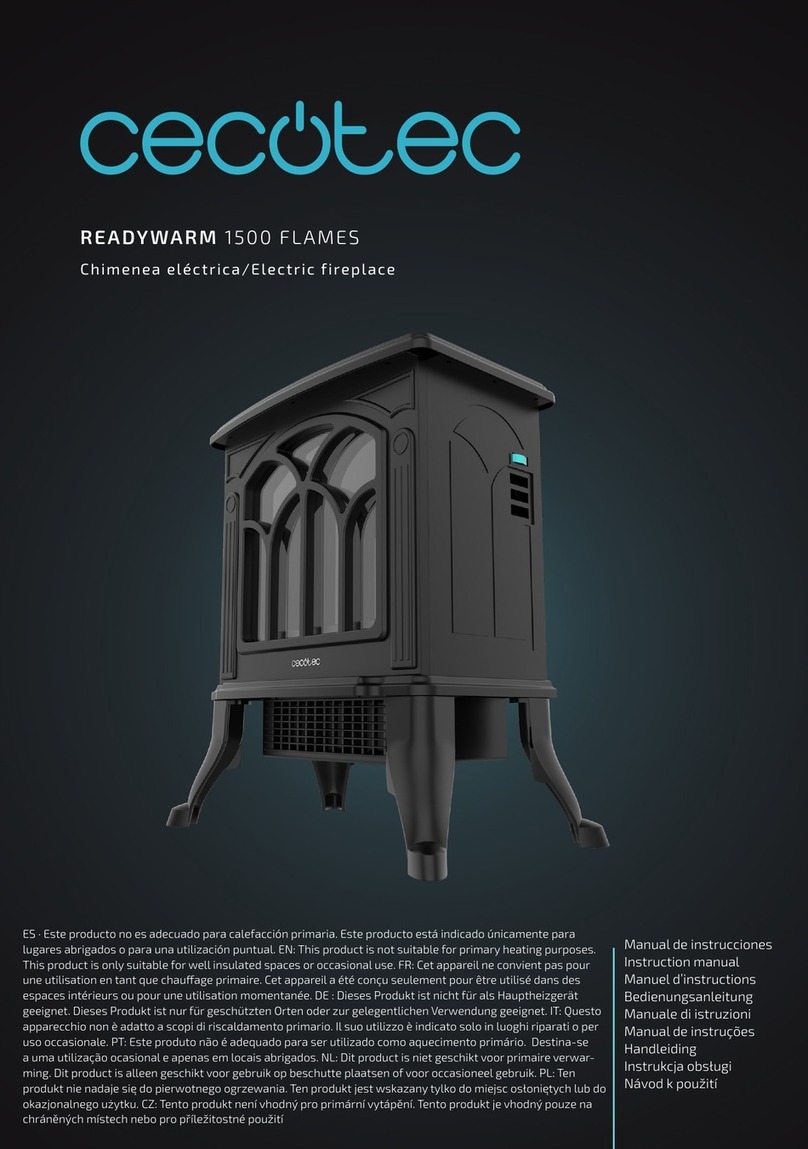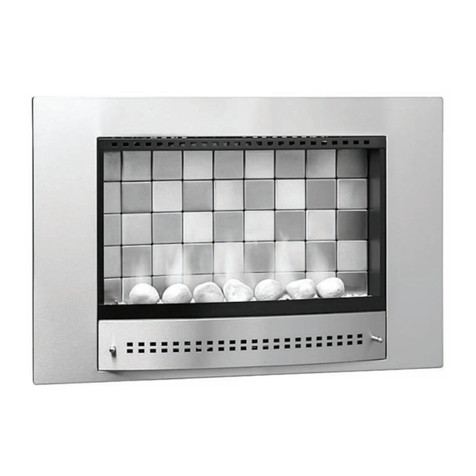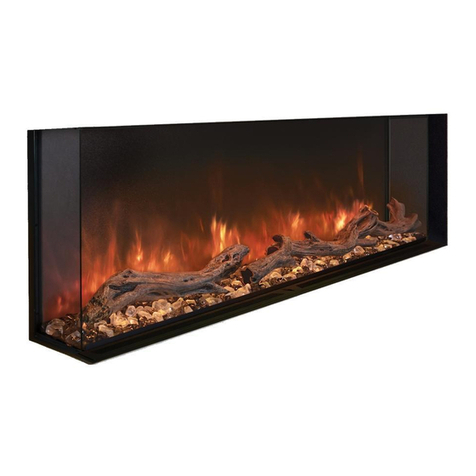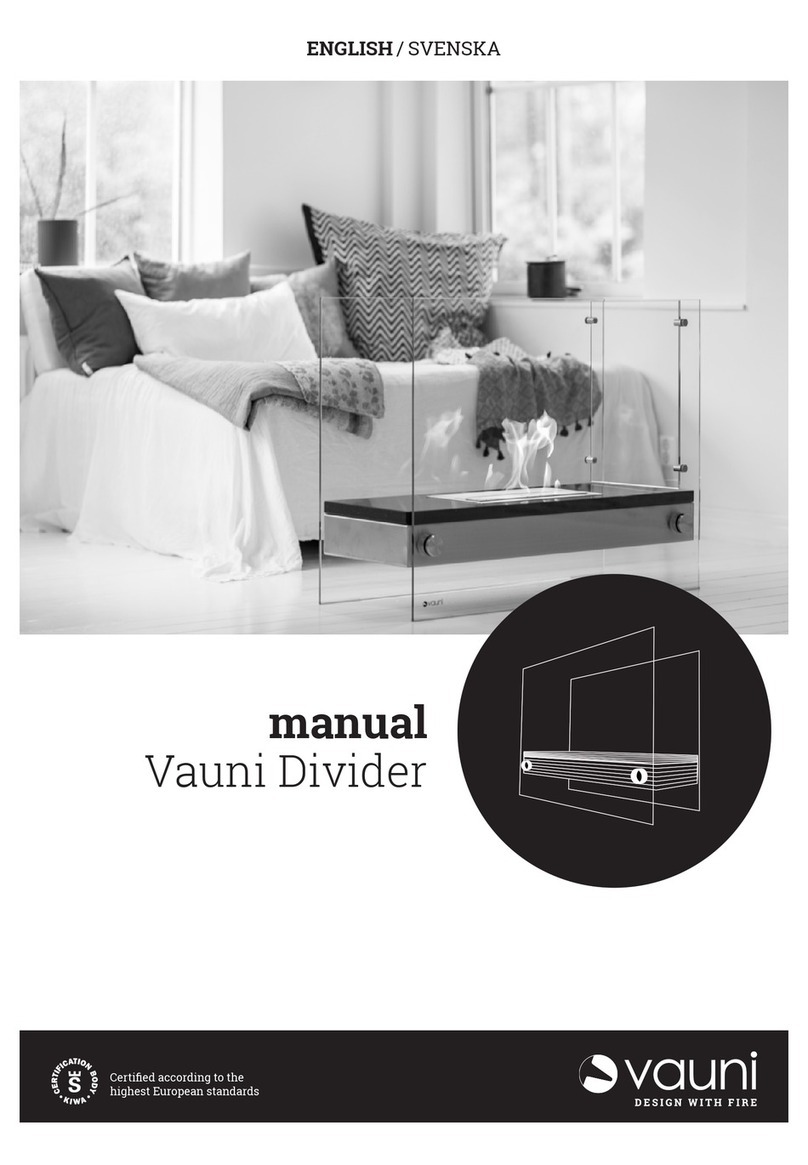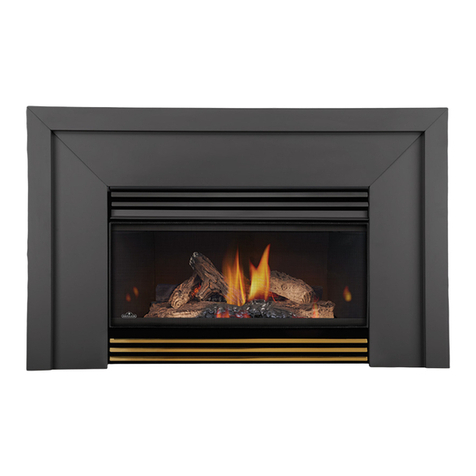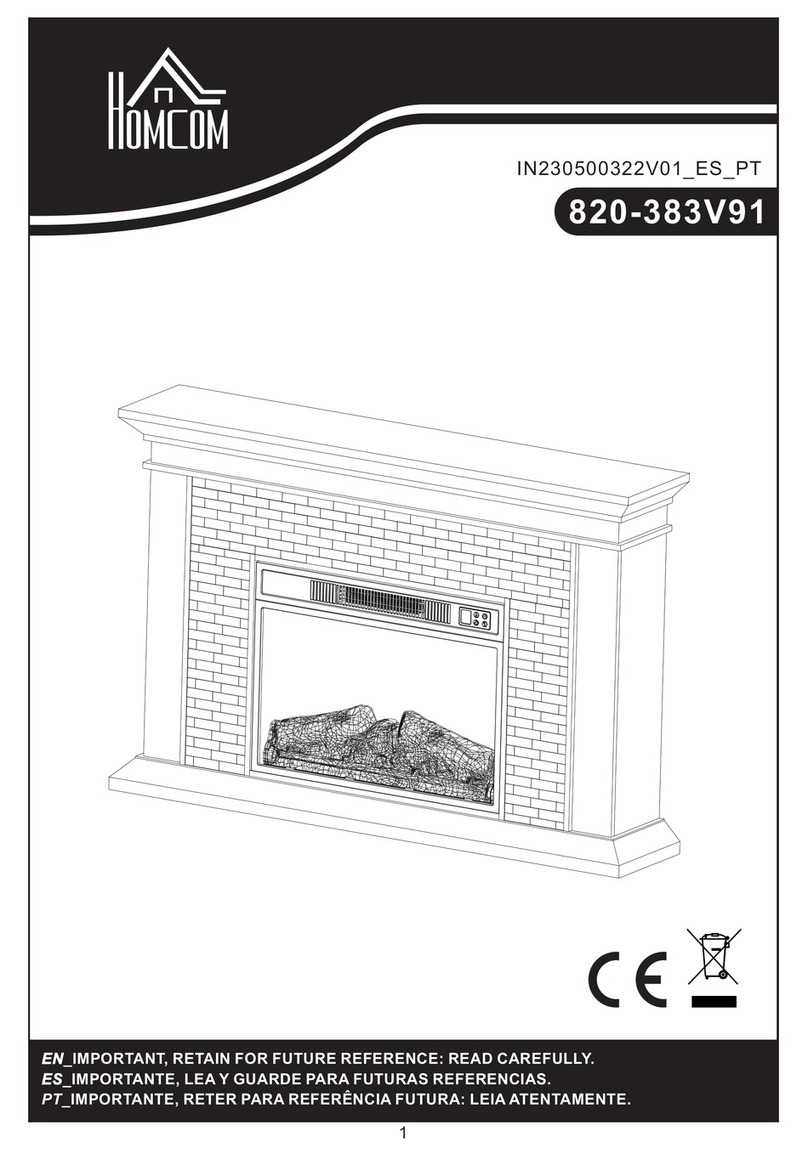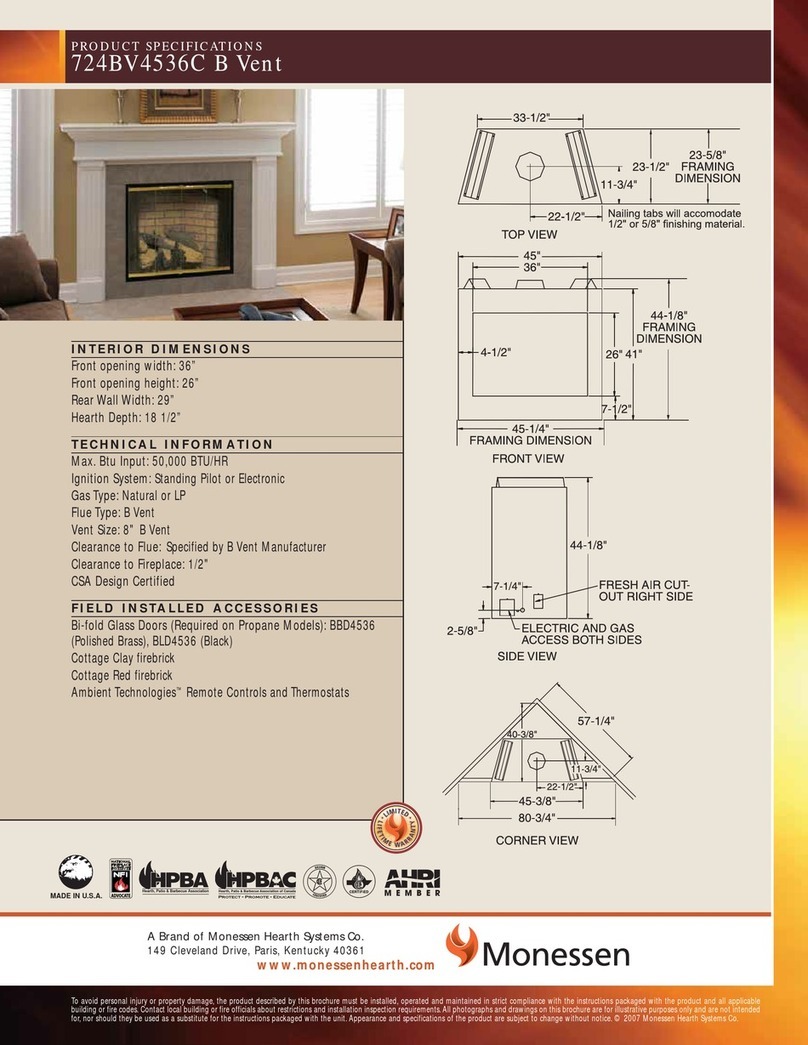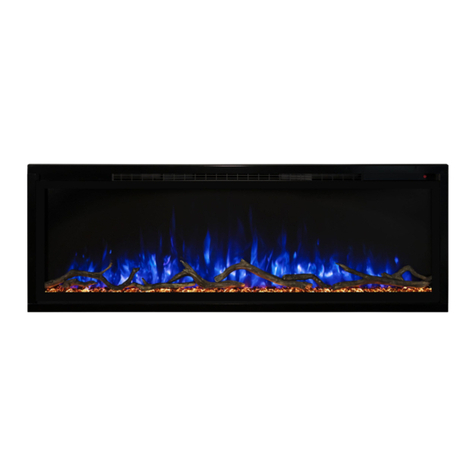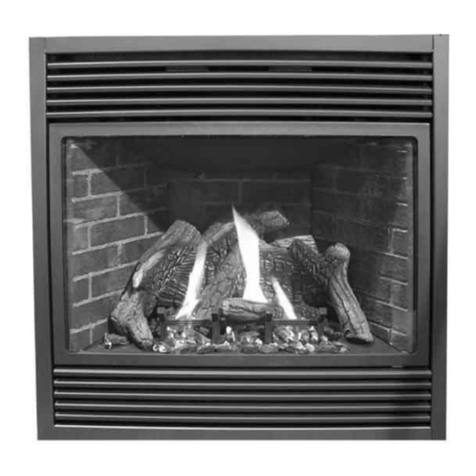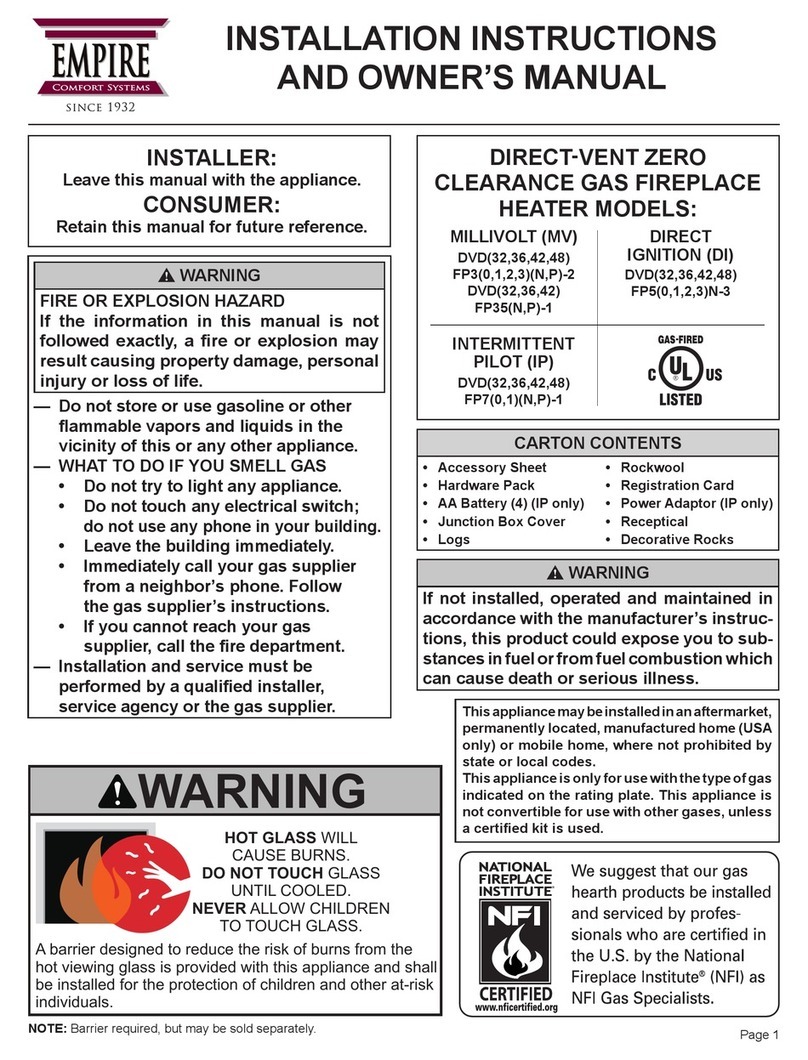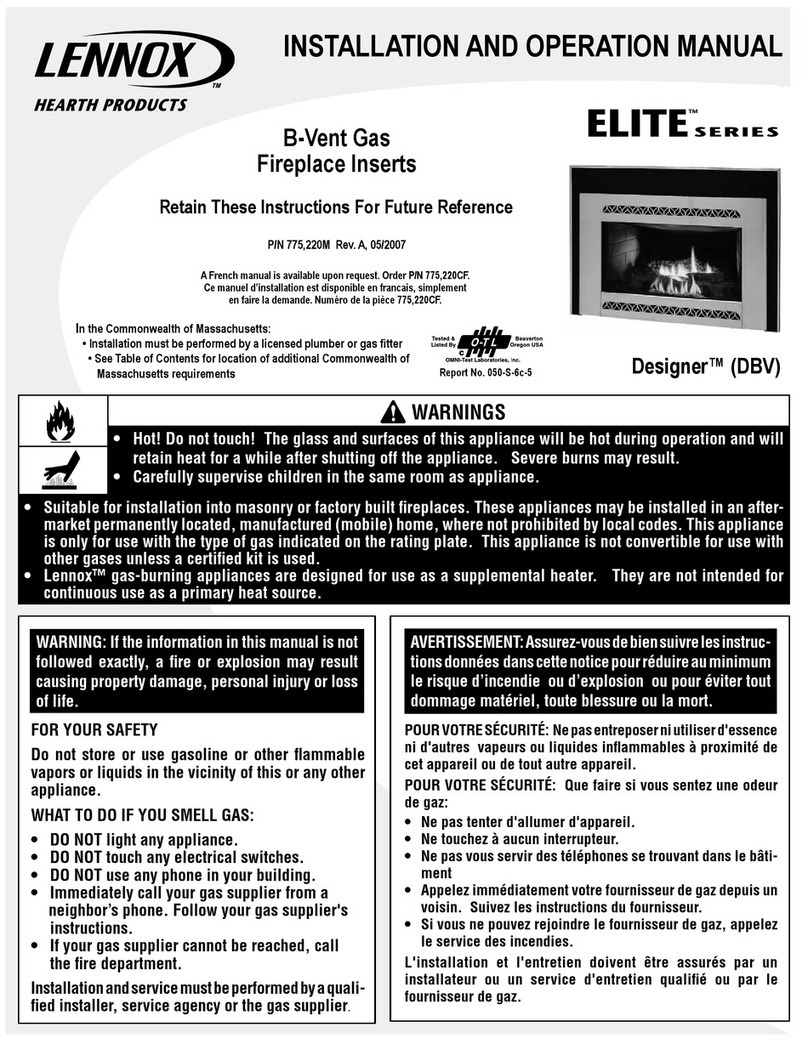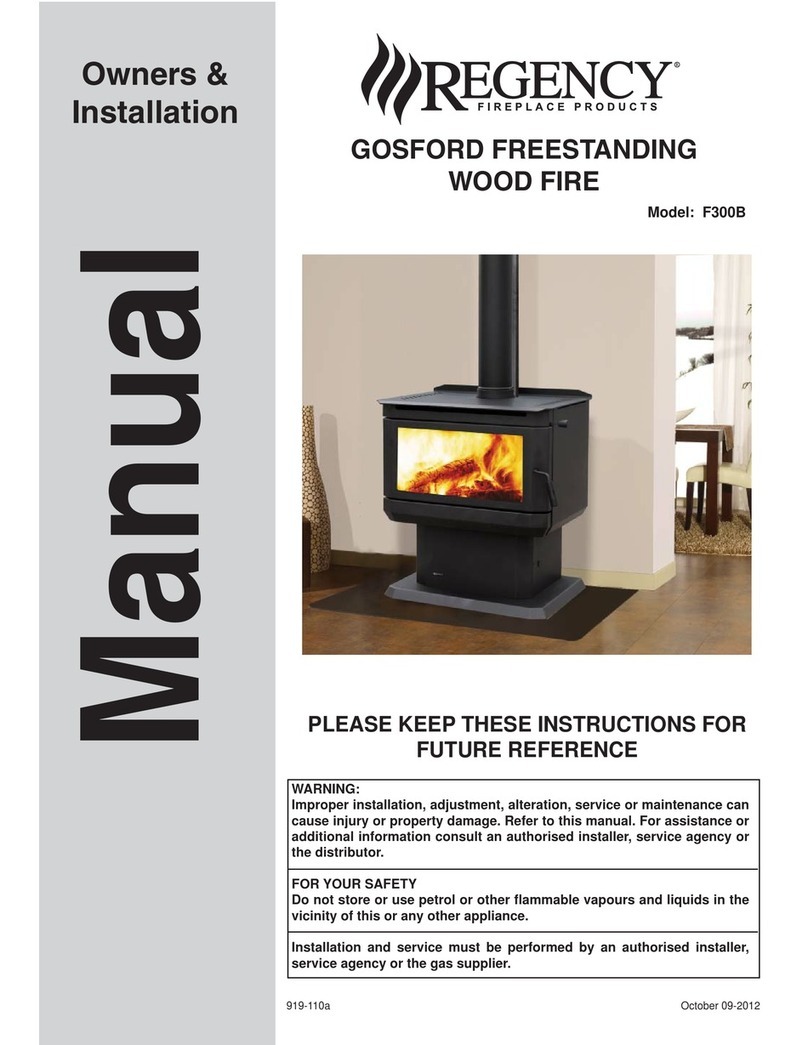
2
WARNING: Improper installation,
alteration, service, or maintenance can cause
injuryorpropertydamage. Refer to this manual for
correct installation and operational proced-
ures. For assistance or additional information
consult a qualified installer, service agency,
or the gas supplier.
WARNING:
only in a solid-fuel burning masonry or UL127
factory-built fireplace, constructed of noncom-
bustible material, and connected to a working
flue. (See page 5 for minimum flue opening.)
WARNING: This is a gas-fired appliance. It uses
from the room in which it is installed.
combustion and ventilat-
must be provided. Refer to the National
Z233.1/NFPA 54,Air for Com-
bustion and Ventilation .
WARNING: This product contains chemi-
the State of California to cause
cancer or birth defects, or other reproductive
WARNING: Keep flue open when operating
IMPORTANT: Read this owner’s manual carefully
andcompletely before trying to assemble, op-
erate, or service this log set. Improper use of
this log set can cause serious injury or death
from burns, fire, explosion, electrical shock,
and carbon monoxide poisoning.
DANGER: Carbon monoxide poisoning may
lead to death!
Carbon Monoxide Poisoning:Early signs of carbon
Natural and Propane/LP Gas: Natural and propane/LP
gases are odorless. An odormaking agent is added to the
gas. The odor helps you detect a gas leak. However,
the odor added to the gas can fade. Gas may be present
even though no odor exists.
Make certain you read and understand all warnings.
Keep this manual for reference. It is your guide to safe
and proper operation of this log set.
WARNING: Any change to this log set or its con-
trols can be dangerous.
1. This appliance, as supplied, is only for use with the
type of gas indicated on the rating plate. This appliance
is convertible for use with propane/LP.
Safety ............................................................... 2-3
Product Identification ........................................... 3
Local Codes .........................................................4
Unpacking ............................................................4
Product Features ................................................. 4
Operation
................... ...........
.. .............................
Inspecting Burners ............................................
Cleaning and Maintenance ................................12
Service Hints .....................................................
Technical Service ...............................................
Troubleshooting ...........................................12-13
Replacement Parts ......................................14-15
Warranty ............................................ Back Cover
SAFETY
adjustment,
This appliance is for installation
air (oxygen)
Provisions for adequate
ion air
Fuel Gas Codes, ANSI
cals known to
harm.
unit.
monoxide poisoning resemble the flu, with headaches,
dizziness, or nausea. If you have these signs, the log
set may not be working properly. Get fresh air at once!
Have log set serviced. Some people are more affected
by carbon monoxide than others. These include pregnant
women, people with heart or lung disease or anemia,
those under the influence of alcohol, and those at high
altitudes.
2. What to do if you smell gas:
Shut off gas supply.
• Do not try to light any appliance.
Do not touch any electrical switch; do not use any
neighbor’s
phone. Follow the gas supplier’s instructions.
3. Never install the log set:
• In a recreational vehicle
• Wherecurtains, furniture, clothing, or other flammable
objects are less than 42" from the front, top, or sides
o f the log se t
• In high traffic area
(see Conversion
Instruction, P.7 )
Installation
•
• Immediately call your gas supplier from a
•
phone in your building.
• In windy or drafty areas
4- 9
................ ................ .......
........................................... 10
11
12
12
• If you cannot reach your gas supplier, call the fire
department.
















